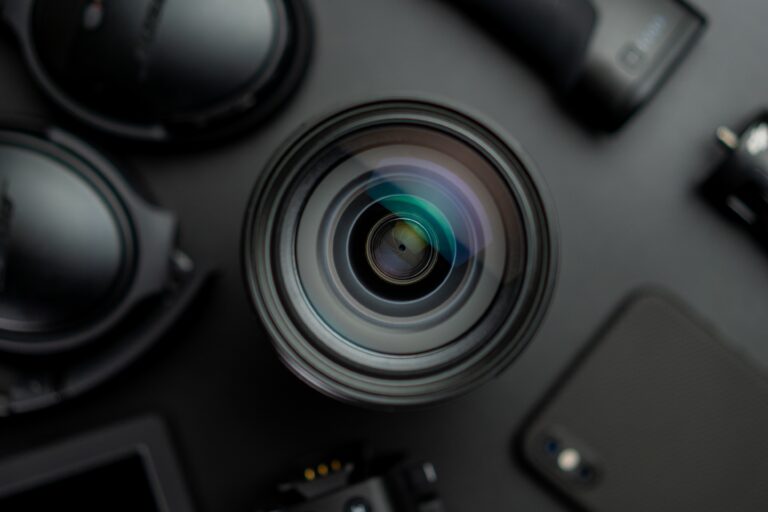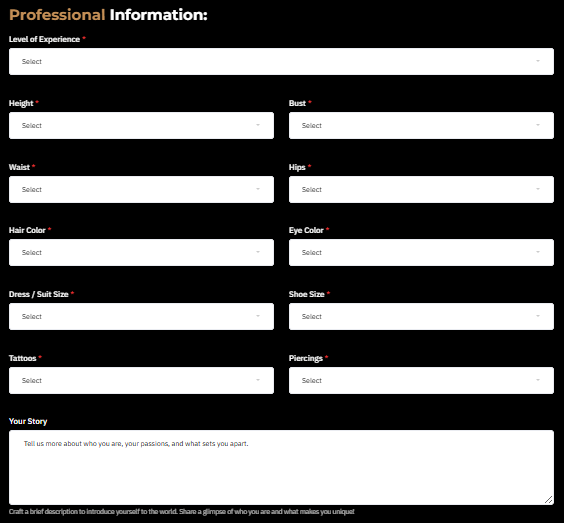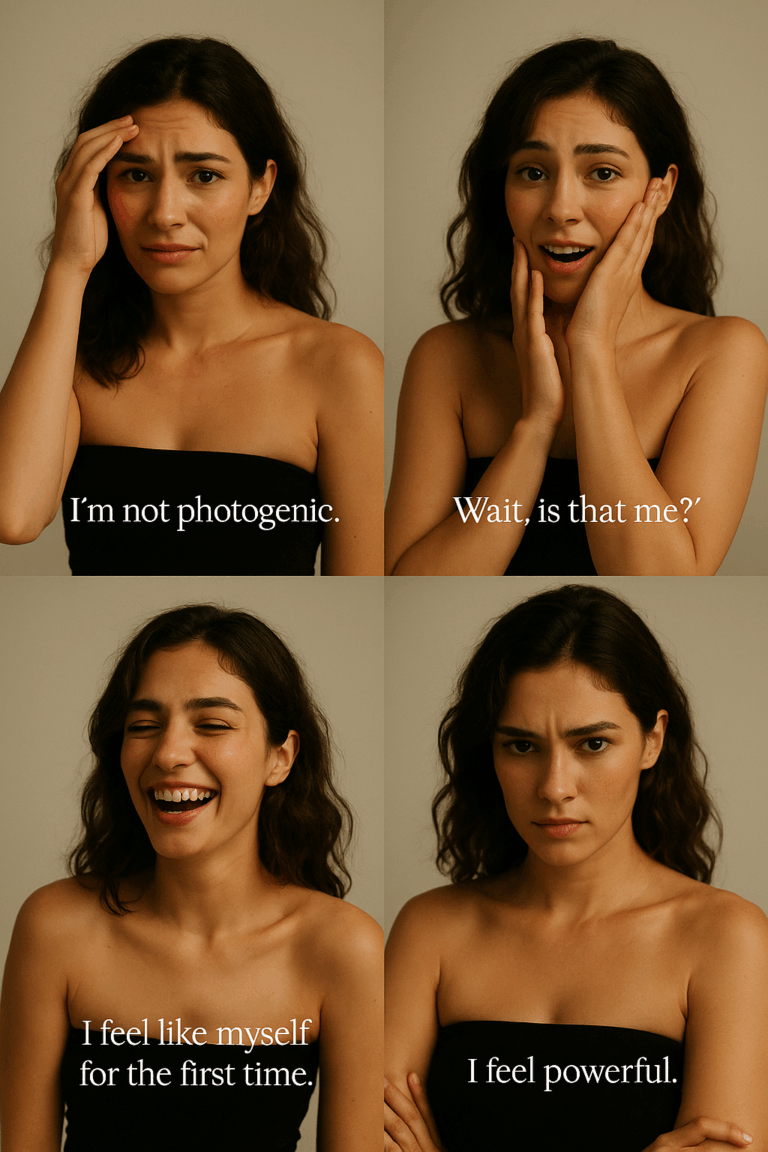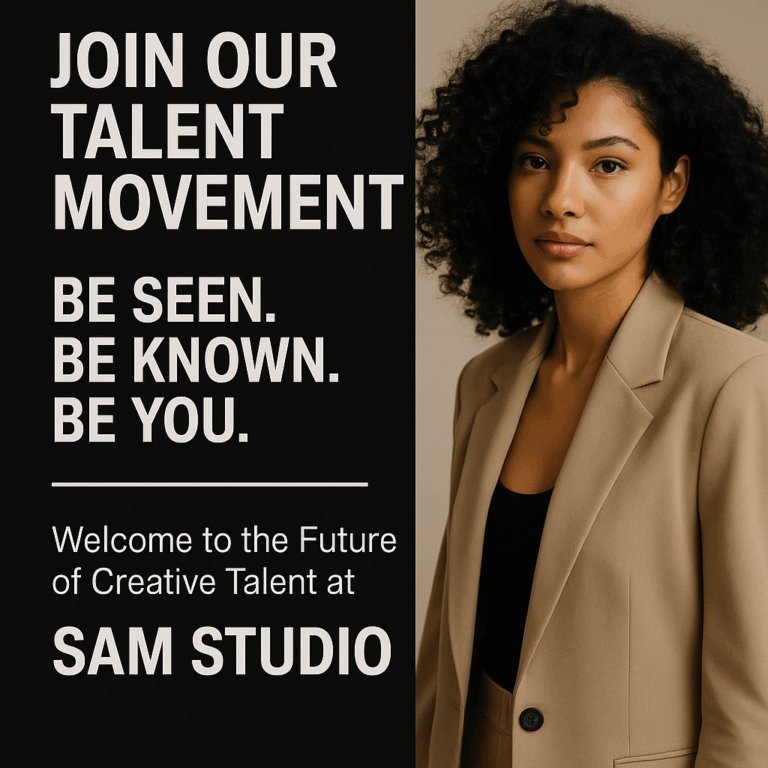The Privilege of Belonging: Inside the World of Sam Studio Exclusive Members

The Privilege of Belonging: Inside the World of Sam Studio Exclusive Members
There are moments in life that deserve more than attention — they deserve reverence.
At Sam Studio, we’ve built a sanctuary for those who understand that beauty isn’t accidental. It’s deliberate, intimate, and deeply personal.
The Sam Studio Exclusive Membership isn’t a product. It’s an invitation — to belong to a world that doesn’t follow trends, but defines them.
Because true luxury has never been about things. It’s about time, attention, and taste.
At Sam Studio, we’ve built a sanctuary for those who understand that beauty isn’t accidental. It’s deliberate, intimate, and deeply personal.
The Sam Studio Exclusive Membership isn’t a product. It’s an invitation — to belong to a world that doesn’t follow trends, but defines them.
Because true luxury has never been about things. It’s about time, attention, and taste.
The Art of Belonging
Our exclusive members don’t seek validation. They seek alignment — with creators who understand refinement on an emotional level. Sam Studio exists to serve that calling.
To become a member is to gain access to a discreet creative circle, one that respects privacy as much as it celebrates art. Every interaction is deliberate. Every detail, a whisper of excellence.
We design experiences for those who expect the world to move seamlessly around them — not because of arrogance, but because they’ve earned that ease.
To become a member is to gain access to a discreet creative circle, one that respects privacy as much as it celebrates art. Every interaction is deliberate. Every detail, a whisper of excellence.
We design experiences for those who expect the world to move seamlessly around them — not because of arrogance, but because they’ve earned that ease.
The Beauty of Privacy
Luxury is quiet. It’s a silent assurance that your world is understood without ever being explained.
At Sam Studio, discretion isn’t a policy — it’s a promise. Your sessions, your imagery, your moments of creation remain entirely yours. Whether it’s a personal portrait, a family legacy piece, or a confidential brand project, your privacy is protected with the same care as your creative vision.
Our members value being seen only when they choose to be. We honor that sacred balance.
At Sam Studio, discretion isn’t a policy — it’s a promise. Your sessions, your imagery, your moments of creation remain entirely yours. Whether it’s a personal portrait, a family legacy piece, or a confidential brand project, your privacy is protected with the same care as your creative vision.
Our members value being seen only when they choose to be. We honor that sacred balance.
Crafting the Intangible
Every session begins with a conversation — not about what you want, but about why you want it. Because our members don’t just come for photos; they come for something far rarer: to be understood without words.
We study light, mood, and presence the way perfumers study scent. We find the emotion that defines you — and build an atmosphere around it.
The result isn’t just imagery. It’s a reflection of who you are when the world isn’t watching.
We study light, mood, and presence the way perfumers study scent. We find the emotion that defines you — and build an atmosphere around it.
The result isn’t just imagery. It’s a reflection of who you are when the world isn’t watching.
When Experience Becomes Heritage
True collectors know: beauty is an investment. Our exclusive members treat their time with us as an heirloom experience — something to be remembered, passed down, revisited.
A Sam Studio creation endures. It becomes a visual signature, an artifact of identity. For some, it’s a symbol of personal evolution. For others, it’s a legacy to leave behind.
Either way, it’s timeless.
A Sam Studio creation endures. It becomes a visual signature, an artifact of identity. For some, it’s a symbol of personal evolution. For others, it’s a legacy to leave behind.
Either way, it’s timeless.
Designed for the Few
We intentionally keep our membership circle small. Not for scarcity’s sake, but for intimacy.
We know each member by name, by energy, by essence. You are never a “client” here — you are a collaborator in the quiet pursuit of perfection.
This is not mass luxury. This is crafted exclusivity — the kind that doesn’t scream for attention, but captures it effortlessly.
We know each member by name, by energy, by essence. You are never a “client” here — you are a collaborator in the quiet pursuit of perfection.
This is not mass luxury. This is crafted exclusivity — the kind that doesn’t scream for attention, but captures it effortlessly.
The Invisible Service
Our members experience what we call invisible luxury — an approach where everything works seamlessly before you even think to ask.
Scheduling becomes effortless. Retouching is handled with silent precision. Deliveries are made in private, custom packaging. Everything feels intuitive, because every detail was designed for you long before you arrived.
Your only task? To exist fully in the moment while we immortalize it.
Scheduling becomes effortless. Retouching is handled with silent precision. Deliveries are made in private, custom packaging. Everything feels intuitive, because every detail was designed for you long before you arrived.
Your only task? To exist fully in the moment while we immortalize it.
The Power of Being Known
There’s something magnetic about being recognized — not for fame, but for presence.
As an exclusive member, our artists and creative directors learn your preferences, lighting moods, angles, and emotions. We know the colors that make you feel powerful, and the moments that make you feel alive.
That knowledge allows us to craft work that feels unmistakably yours. Every frame, every tone, every gesture — a signature that belongs to no one else.
As an exclusive member, our artists and creative directors learn your preferences, lighting moods, angles, and emotions. We know the colors that make you feel powerful, and the moments that make you feel alive.
That knowledge allows us to craft work that feels unmistakably yours. Every frame, every tone, every gesture — a signature that belongs to no one else.
Discretion Meets Desire
For those whose lives operate in private realms — executives, public figures, collectors, and creators — discretion is non-negotiable.
Our team works with absolute confidentiality, guided by the belief that privacy is the highest form of respect. No leaks. No assumptions. Just artistry in silence.
Luxury isn’t about being seen everywhere. It’s about being remembered by the right few.
Our team works with absolute confidentiality, guided by the belief that privacy is the highest form of respect. No leaks. No assumptions. Just artistry in silence.
Luxury isn’t about being seen everywhere. It’s about being remembered by the right few.
The Ritual of Membership
Becoming an exclusive member isn’t a transaction. It’s a quiet initiation.
From the moment you join, a dedicated creative concierge becomes your personal point of connection. Your sessions, preferences, and projects are handled through direct communication — no public scheduling, no waiting lists, no noise.
We design your creative calendar around your life, not the other way around.
From the moment you join, a dedicated creative concierge becomes your personal point of connection. Your sessions, preferences, and projects are handled through direct communication — no public scheduling, no waiting lists, no noise.
We design your creative calendar around your life, not the other way around.
Access to the Unseen
Members gain access to private showcases, unreleased concepts, and pre-launch creative experiences unavailable to the public.
Sometimes, it’s an invitation to a hidden exhibition. Sometimes, it’s a personalized design consultation in your private residence.
Always, it’s about giving you what others can’t even imagine asking for.
Sometimes, it’s an invitation to a hidden exhibition. Sometimes, it’s a personalized design consultation in your private residence.
Always, it’s about giving you what others can’t even imagine asking for.
The Experience of Effortless Beauty
In a world where everyone is performing, Sam Studio offers a return to authenticity — a space where you can simply be.
Our exclusive members are never asked to pose. They are invited to exist — elegantly, naturally, and truthfully.
That authenticity is what makes every image priceless.
Our exclusive members are never asked to pose. They are invited to exist — elegantly, naturally, and truthfully.
That authenticity is what makes every image priceless.
The Currency of Time
Our members understand the rarest currency isn’t money — it’s time.
That’s why we’ve made efficiency and ease central to every interaction. From concept to delivery, our process honors your schedule and your energy.
You give us your trust. We give you your legacy.
That’s why we’ve made efficiency and ease central to every interaction. From concept to delivery, our process honors your schedule and your energy.
You give us your trust. We give you your legacy.
The Emotional Luxury
We don’t sell services. We curate feelings.
That moment when the lighting catches your skin just right, when the silence in the room feels like reverence — that’s the experience our members come for.
Luxury, after all, is emotional. It’s the feeling of being completely seen, understood, and transformed.
That moment when the lighting catches your skin just right, when the silence in the room feels like reverence — that’s the experience our members come for.
Luxury, after all, is emotional. It’s the feeling of being completely seen, understood, and transformed.
For Those Who Know
Sam Studio isn’t for everyone. And that’s exactly why our members choose it.
To the outside world, it’s a creative studio. To those within, it’s a sanctuary — where art and privacy meet, where desires are understood before they are spoken, and where every creation carries your essence.
You don’t join to impress. You join to belong.
To the outside world, it’s a creative studio. To those within, it’s a sanctuary — where art and privacy meet, where desires are understood before they are spoken, and where every creation carries your essence.
You don’t join to impress. You join to belong.
The Invitation
For a limited few, membership doors open quietly — never advertised, never mass-offered.
Those who find their way here often describe it as destiny, not discovery.
If that resonates, perhaps it’s time.
Because at Sam Studio, we don’t chase beauty.
We become it.
Those who find their way here often describe it as destiny, not discovery.
If that resonates, perhaps it’s time.
Because at Sam Studio, we don’t chase beauty.
We become it.
2 likes
3 Comments








